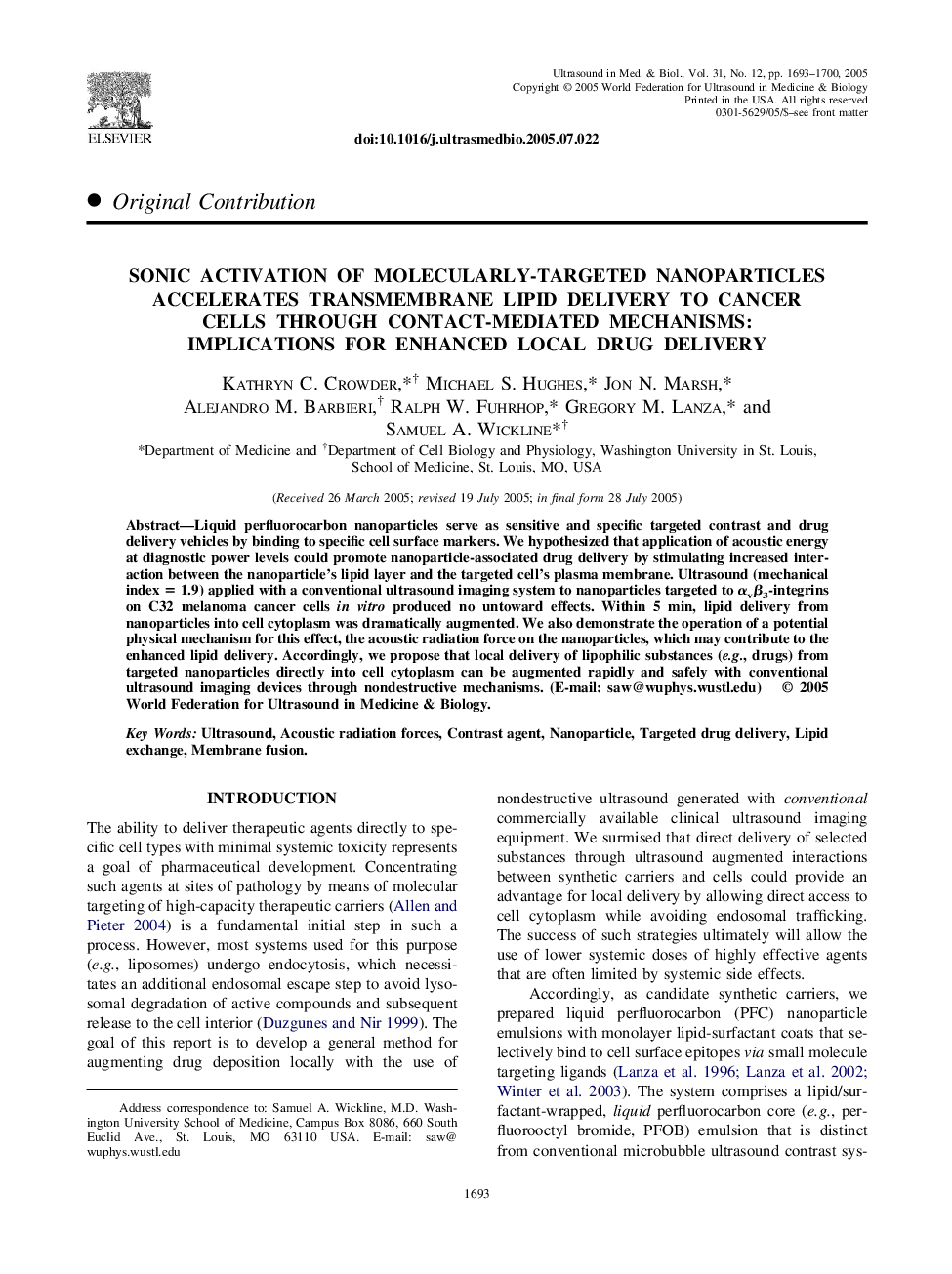| Article ID | Journal | Published Year | Pages | File Type |
|---|---|---|---|---|
| 10692418 | Ultrasound in Medicine & Biology | 2005 | 8 Pages |
Abstract
Liquid perfluorocarbon nanoparticles serve as sensitive and specific targeted contrast and drug delivery vehicles by binding to specific cell surface markers. We hypothesized that application of acoustic energy at diagnostic power levels could promote nanoparticle-associated drug delivery by stimulating increased interaction between the nanoparticle's lipid layer and the targeted cell's plasma membrane. Ultrasound (mechanical index = 1.9) applied with a conventional ultrasound imaging system to nanoparticles targeted to αvβ3-integrins on C32 melanoma cancer cells in vitro produced no untoward effects. Within 5 min, lipid delivery from nanoparticles into cell cytoplasm was dramatically augmented. We also demonstrate the operation of a potential physical mechanism for this effect, the acoustic radiation force on the nanoparticles, which may contribute to the enhanced lipid delivery. Accordingly, we propose that local delivery of lipophilic substances (e.g., drugs) from targeted nanoparticles directly into cell cytoplasm can be augmented rapidly and safely with conventional ultrasound imaging devices through nondestructive mechanisms. (E-mail: saw@wuphys.wustl.edu)
Related Topics
Physical Sciences and Engineering
Physics and Astronomy
Acoustics and Ultrasonics
Authors
Kathryn C. Crowder, Michael S. Hughes, Jon N. Marsh, Alejandro M. Barbieri, Ralph W. Fuhrhop, Gregory M. Lanza, Samuel A. Wickline,
